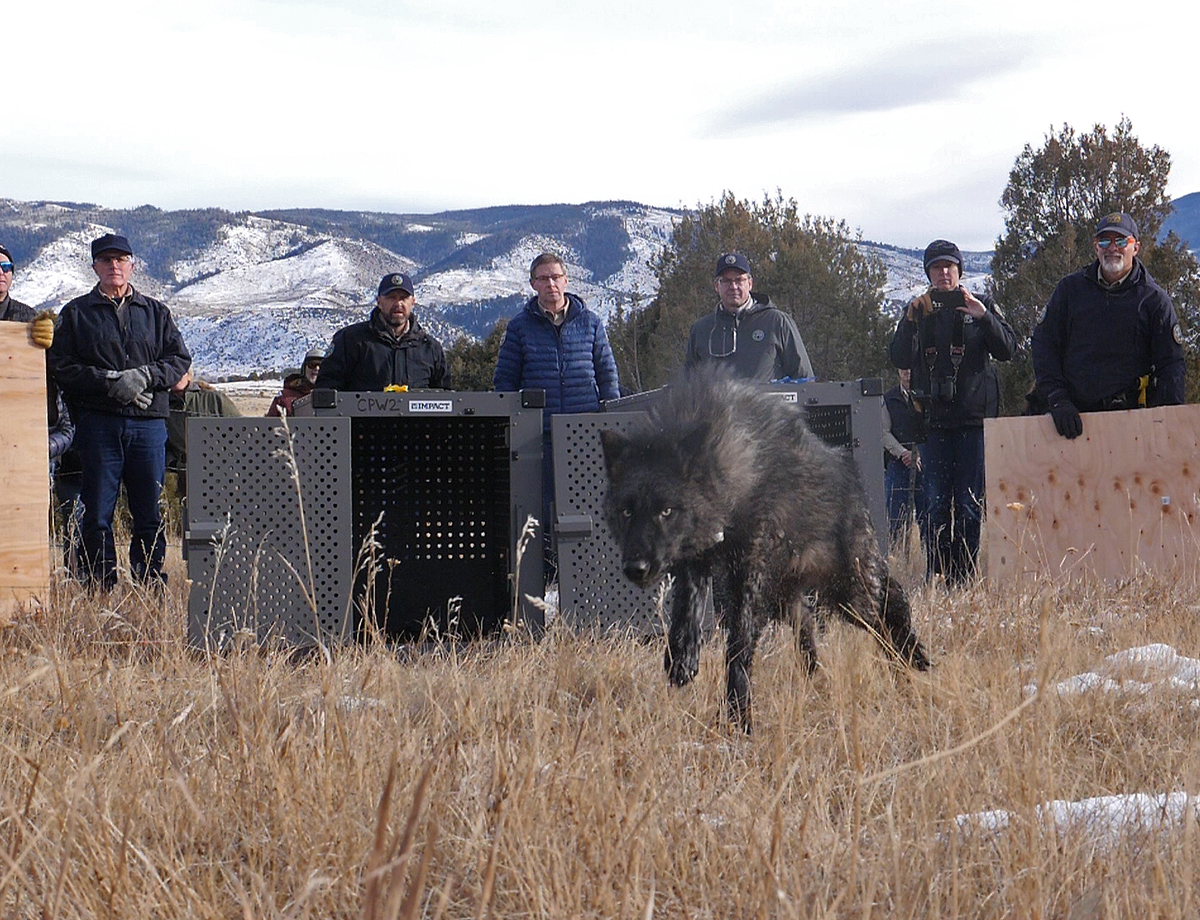
It’s hard to imagine that a tiny lap dog like a Pomeranian is descended from wolves. But Colorado journalist Gavin Ehringer tells Colorado Matters that’s what domestication and breeding have resulted in. He writes about humans’ strange and wonderful relationship with domesticated animals in a new book, “Leaving The Wild: The Unnatural History of Dogs, Cats, Cows and Horses.” For example, did you know where Kitty Litter comes from? (Read below!)
Excerpt
Cats: Life in the Great Indoors When World War II ended in 1946, Navy veteran Ed Lowe returned to Michigan and went to work for his father’s bulk delivery business. One of the products they sold was Fuller’s Earth, a kiln-dried clay that mechanics used to soak up spilled motor oil. Able to absorb many times its weight in liquids, it made cleaning garage floors a snap. Lowe realized that the product worked equally well for absorbing chicken manure. So, he bagged up some of the clay and set out in his ’43 Chevy coupe, intent on selling poultrymen on his “Chicken Litter.” The 27-year-old wannabe entrepreneur didn’t find any buyers. Chicken farmers simply couldn’t see the advantage of using the clay in place of straw bedding they could gather from their fields for free. Discouraged, Ed returned to his home in Cassopolis, where the unsold bags languished in his vehicle’s trunk. One day, a neighbor named Kaye Draper stopped by. Her cat’s outdoor sand box had frozen, she explained, and wondered whether she could get some sawdust to use instead. In a moment of inspiration, Ed suggested that she try some of the clay pellets he had in the trunk of his car. A few days later, Mrs. Draper came by for more. She commented on how well the material absorbed her cat’s urine and praised its ability to knock down the strong ammonia odor. Ed Lowe realized he might be on to something. So he scrawled the name “Kitty Litter” on ten paper sacks filled with Fuller’s Earth and took them to a local pet store. The owner doubted that people would pay Lowe’s price of 65 cents a bag. After all, cat owners could buy sand for just one penny a pound. So, Lowe suggested he give them their first bag for free. When the customers returned and asked for “Kitty Litter” by name, a business and a brand were born. In early 1947, Ed began filling the trunk of his Chevy with bags of Kitty Litter, traveling the Midwest and convincing owners of pet shops, feed stores and groceries to find shelf space for his product. He cleaned cat boxes at pet shows in exchange for booth space and a chance to convince new customers. In a matter of years, Kitty Litter would make Lowe a very wealthy man. When he sold the family business in 1990, Lowe’s company dominated the industry he’d created, selling an estimated $200 million worth of Tidy Cat kitty litter and subsidiary brands a year. His story is still told in business schools as an example of a man creating an entire industry…from scratch. Ed’s timing had been perfect. When he began selling his Kitty Litter, the US was in the midst of an economic transformation. In the 1930s, more than half of all Americans still lived on farms where animals were expected to earn their keep and cats were expected to live outdoors. But during the Second World War, America ramped up its industrial might and people left the countryside by the millions to join the war effort. When the conflict ended, the flight from rural America accelerated as soldiers returned from overseas, started families, and found well-paying jobs in the cities and homes in suburbs. This lifestyle demanded new and more intimate logistics when it came to keeping pets. And if fostered a new way of thinking about them, too. Lowe’s product transformed the relationship most Americans had with cats. Prior to Kitty Litter, only people with an abiding affection for felines and strong stomachs for the stench of their cat boxes kept their kitties indoors. Kitty Litter gave felines carte blanche to live in people’s homes, initiating a hostile takeover of the American household – at least in the eyes of cats’ nemesis, dogs. Though it took more than half a century, the cat has supplanted the dog as America’s No. 1 pet. Counting only “owned” cats, not free-living feral cats, the American Pet Products Association estimated in 2016 that there are now more than 85 million cats in American homes, versus about 77.8 million dogs. From the new book Leaving The Wild: The Unnatural History of Dogs, Cats, Cows and Horses, by Gavin Ehringer. (©2017 Pegasus Books) Used with permission. |









